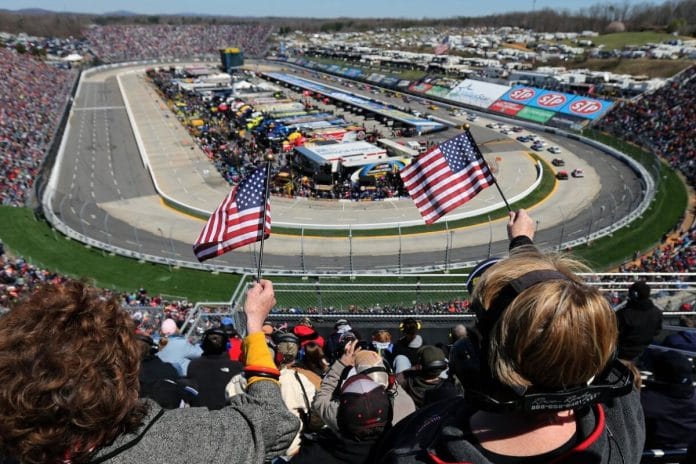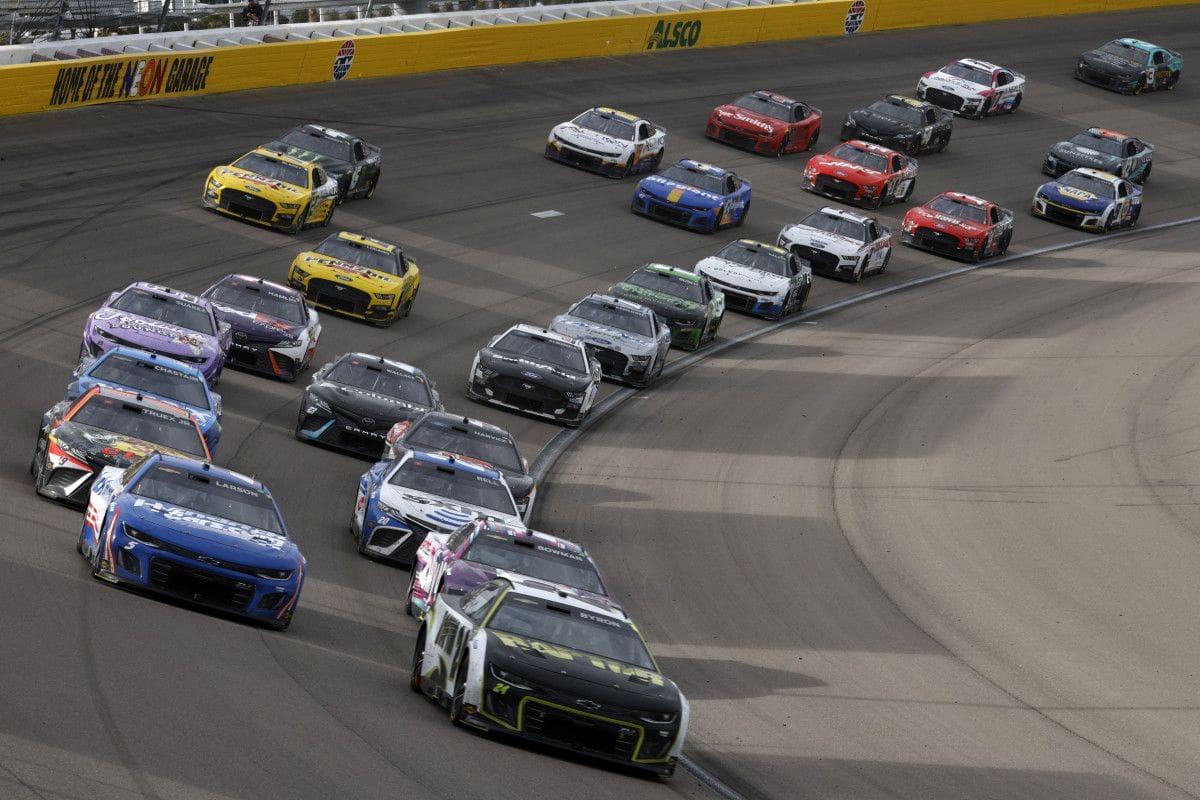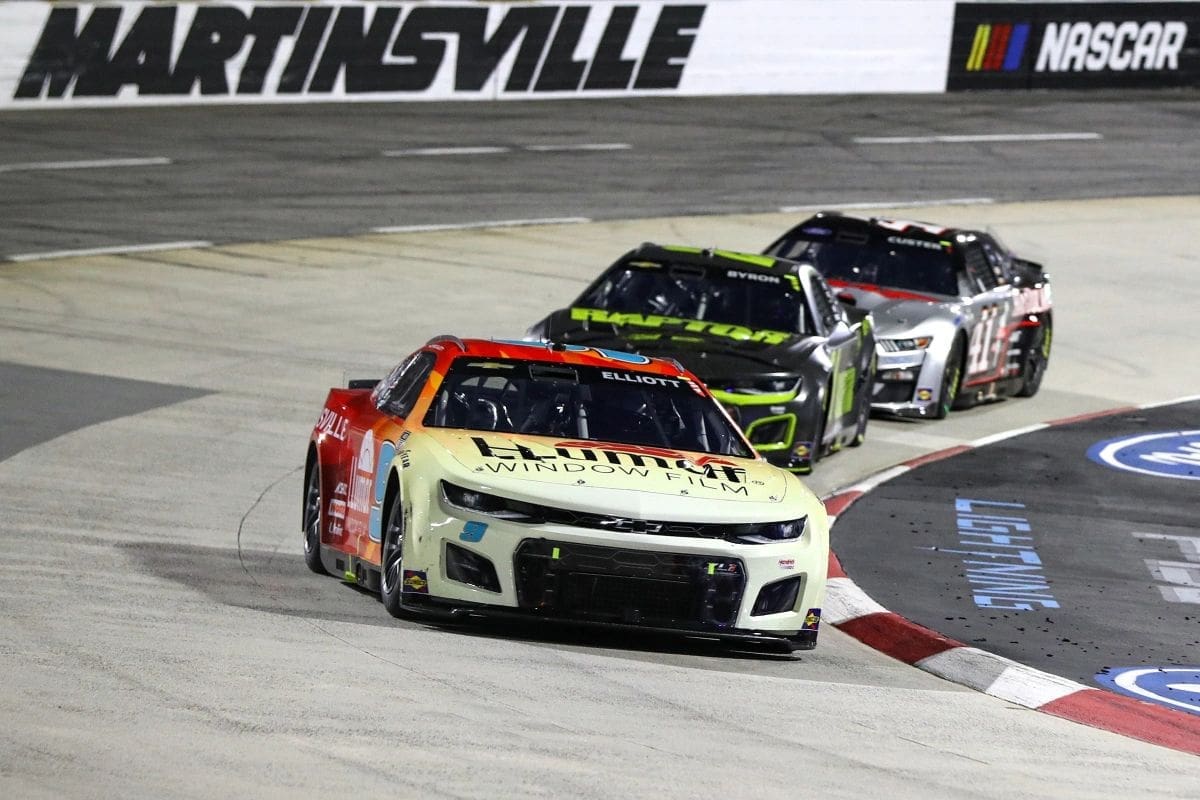Goodyear’s New Tires Can’t Save NASCAR: Despite Goodyear’s notable advancements in tire technology, NASCAR’s current schedule reveals considerable gaps that undermine the potential for thrilling races. Tracks like Martinsville Speedway continue to present challenges, with persistent aerodynamic inefficiencies limiting overtaking and general excitement. While improved tire performance is a step forward, it raises questions about the adequacy of testing protocols and the need for groundbreaking strategies to improve competitive dynamics. As NASCAR navigates these complexities with the Next-Gen car, one must consider what further changes are necessary to truly raise the racing experience and satisfy both fans and drivers similarly.
Key Highlights
- Despite Goodyear’s tire advancements, concerns about tire durability and performance persist, particularly in tight racing environments like Martinsville.
- The current tire technology struggles to effectively address foundational aerodynamic inefficiencies impacting overtaking opportunities.
- Limited testing protocols hinder the exploration of new tire compounds and configurations, which may enhance race dynamics.
- The Next-Gen car’s lower horsepower levels restrict competitive racing, necessitating further adjustments in performance standards.
- Ongoing skepticism about proposed track modifications indicates a need for comprehensive evaluations to improve overall racing excitement.
NASCAR Prepares for Playoffs at Martinsville Speedway
As NASCAR gears up for the playoffs, the focus raise on Martinsville Speedway, a crucial venue in the postseason narrative. This flat, 0.526-mile track, known for its unique challenges, often tests the mettle of Cup Series drivers. Historically, Martinsville has put away a reputation for being a frustrating arena, primarily due to its tight turns and limited passing opportunities. The introduction of the Next-Gen car exacerbates these issues, as its handling characteristics can complicate overtaking tactics, further contributing to the track’s perceived difficulties.
As the playoffs draw near, the anticipation surrounding Martinsville is visible. Teams will be keenly analyzing their setups and strategies to navigate the complexity of this short track effectively.
The outcome at Martinsville could very well serve as a backbone for playoff standings, highlighting the significance of each race in determining championship contenders. With an eye toward innovation and improvement, NASCAR’s efforts to revitalize Martinsville may redefine its role in the playoff landscape, transforming frustration into opportunity on this storied circuit.
Optimizing Tires for Playoffs
With the playoffs approaching, NASCAR has turned its attention to optimizing performance at Martinsville Speedway through a series of tire tests. This tactical move reflects the league’s commitment to addressing the tire-wear phenomenon that notably impacted recent races, particularly in Bristol, North Wilkesboro, and Richmond.
The latest tire test at Martinsville not only sought to refine tire durability but also evaluated different underbody and transaxle configurations, emphasizing a holistic approach to performance improvement.
Kyle Busch and Bubba Wallace participated in the tire test, both expressing satisfaction with the new tire compounds. Busch noted, “I actually liked it as my initial favorite set at Martinsville,” indicating a positive reception among drivers.
Wallace echoed this sentiment, stating, “All in all, it was a good test.” These endorsements suggest that the tire advancements may mitigate some of the challenges faced by teams on this notoriously difficult short track.
“The tires produced more optimism but a conviction that there’s still a power/aero problem.”-(weaver)
NASCAR recently conducted a test at Martinsville, one group on various tires, and another group with reduced underbody and transaxle adjustments.
The tires produced more optimism but a conviction that there's still a power/aero problem. https://t.co/rPkM1f4kjY
— Matt Weaver (@MattWeaverRA) September 3, 2024
However, while the tire tests yielded promising results, never ending smooth issues remain a considerable concern. Observations from drivers and insights from journalist Matt Weaver highlighted that despite the optimism surrounding the tires, there is a lingering conviction regarding power and smooth strong matches.
This dual focus on tire performance and smooth stability will be essential as teams prepare for the vital playoff races ahead. As NASCAR continues to innovate and adapt, the outcomes of these tests will play a fundamental role in shaping competitive dynamics at Martinsville Speedway.
Persistent Issues at Martinsville Speedway
Martinsville Speedway’s ongoing performance challenges have make a point of the complexity of strong matches racing advance in the face of dogged smooth strong matches. Recent observations from drivers during testing have highlighted the limitations of current tire technology in addressing these issues. Kyle Busch‘s experience exemplifies this, as he noted that even with a notable advantage of 20 laps on fresher tires, he struggled to overtake Carson Hocevar, who was hindered by the same smooth complications. This scenario suggests that tire performance alone cannot rectify the essential air problems that plague Martinsville.
, “I just don’t think the tire is going to be the all-out fix for Martinsville and I say that because I was on 20-lap fresher tires than Carson Hocevar and I ran him down and then got stuck behind him for 10 laps and had a hard time passing him and that to me is an aero problem still.” – (BUSCH)
Furthermore, the attempts to modify the car’s underbody and rear camber configurations, as tested by Hocevar, bend minimal impact on performance. The lack of improvement despite these alterations points to a structural issue within the smooth framework of the vehicles utilized at this short track. The inability to generate sufficient downforce or manage airflow effectively not only hampers overtaking opportunities but also diminishes the overall competitive nature of the races held at Martinsville.
“They tried some camber things in the rear and tried some stuff with the transaxle just to make the left rear spin more but it didn’t really do anything.” – (CARSON)
This situation raises critical questions about the design pattern currently in use and whether they are sufficient to engender the exhilarating racing that fans and drivers similarly expect. The challenges at Martinsville are representative of broader concerns within NASCAR, where balancing technology advancements and race dynamics remains an tangled aim.
Challenges in Improving Martinsville Speedway
Amidst the ongoing quest to improve the racing experience at Martinsville Speedway, considerable challenges remain rooted in the track’s inherent design and the characteristics of the Next-Gen car. The unique configuration of Martinsville, characterized by its tight turns and long straightaways, presents alarming barrier to overtaking. The limited number of racing grooves add to this issue, creating a scenario where drivers find it increasingly difficult to execute successful passes without risking considerable contact.
Moreover, the introduction of the Next-Gen car has compounded these challenges. With its lower horsepower and improved braking capabilities, the car’s design inherently alters the competitive dynamics. Drivers are finding it more challenging to outbrake their opponents, diminishing the excitement typically associated with tire management and tactical late-race maneuvers. This shift in performance characteristics mirrors the outcomes of previous tire tests, where aspirations for improved racing at Martinsville yielded disappointing results.
Efforts to improve the track’s racing conditions are met with skepticism as stakeholders ponder whether these modifications can truly overcome the fundamental limitations imposed by the design of both the circuit and the vehicles. Without considerable innovations in car technology or track configuration, the path to revitalizing the competitive atmosphere at Martinsville remains fraught with obstacles.
The specter of missed opportunities looms large, as the need for a more engaging racing product clashes with the reality of track limitations and car specifications. Ultimately, the evolution of Martinsville Speedway will require a multifaceted approach to navigate these entrenched challenges effectively.
NASCAR’s Test Failure in 2022
Struggling to meet expectations, NASCAR’s 2022 test at Martinsville Speedway emphasized considerable limitations of the Next-Gen car, stirring frustration among drivers and fans in a similar manner. The spring race at Martinsville that year was neatly flat, with only five lead changes, three of which stemmed from green-flag pit stops. Chase Elliott’s dominance—leading 397 laps—underscored the car’s inability to effectively navigate slower traffic, while Denny Hamlin’s use of aero-blocking to finish 28th demonstrated the challenges posed by the car’s design. Such outcomes sharply contrasted with the high power racing typically related with the half-mile track.
In response to the disappointing Martinsville race, NASCAR conducted a tire test, which ultimately yielded minimal progress. Tyler Reddick articulated a critical concern regarding the lower horsepower levels, suggesting that considerable R&D efforts could not be easily reversed without compromising engine reliability across manufacturers. This indicates a fundamental challenge in balancing performance and reliability within the Next-Gen framework.
“A lot of time, research, and development have gone into the horsepower package that we are at now and you can’t just flip a switch or change the tapered spacer or go to a different horsepower level and have the same engine reliability across all the engine manufacturers.” – (TYLER)
Kyle Busch’s critique of tire wear further emphasized the lack of the testing process. He noted that tire degradation was more a function of heat than wear, suggesting a mismatch in tire selection and expectations.
“They’re falling off more due to heat than they’re falling off due to wear so I think we missed on the tire selection that that we had there. We didn’t gain anything on the tire.” -Busch
While the Bristol race later exhibited improved tire wear, the failures at Martinsville in 2022 serve as a warning story. They reveal the complexities in refining race dynamics and highlight the necessity for ongoing adjustments within NASCAR’s testing protocols to meet the expectations of drivers and fans in a similar manner.
News in Brief: Goodyear’s New Tires Can’t Save NASCAR
Despite Goodyear’s advancements in tire technology, the challenges at Martinsville Speedway highlight notable shortcomings within NASCAR’s current framework. tireless smooth strong and limited passing opportunities inhibit the potential for dynamic racing experiences. The necessity for improved testing protocols and creative strategies becomes evident to foster competitive balance and excitement. Without addressing these critical issues, the appeal of NASCAR races may continue to reduce, leaving fans and participants similarly seeking more engaging and uncertain events.
ALSO READ: NASCAR Drivers Who Can Win the 2024 Cup Series Championship Race




